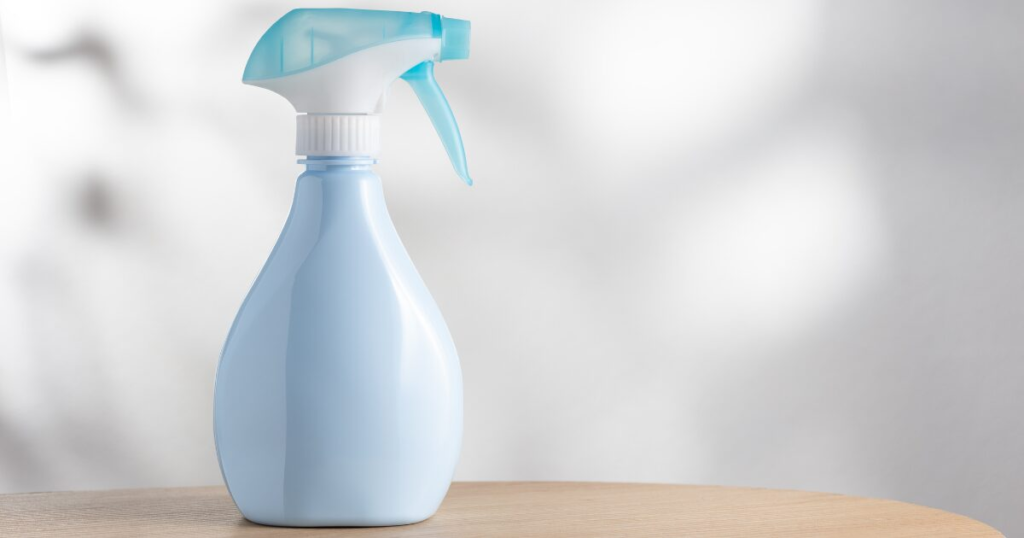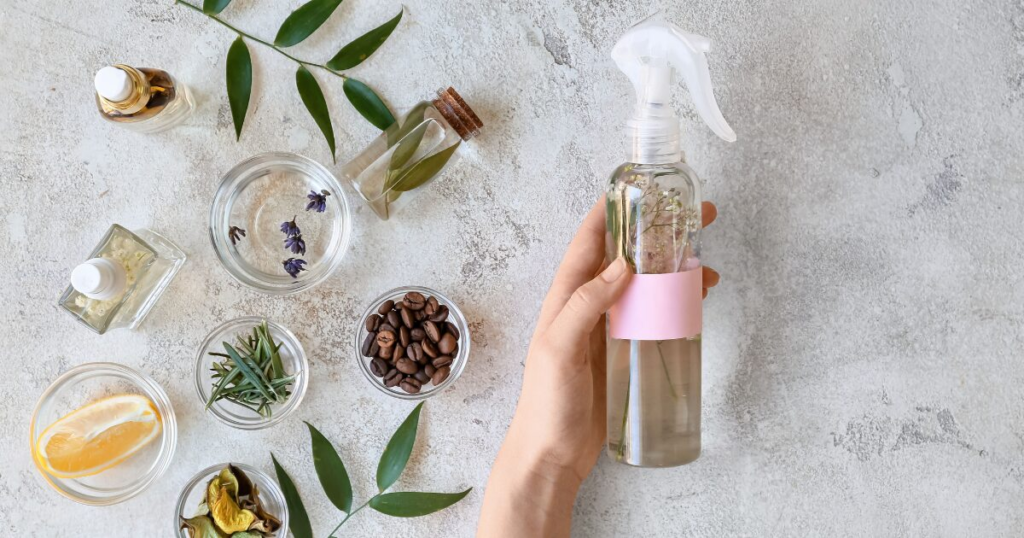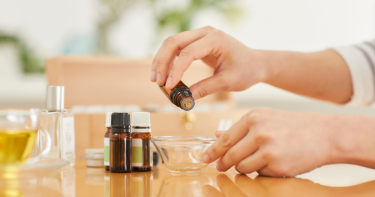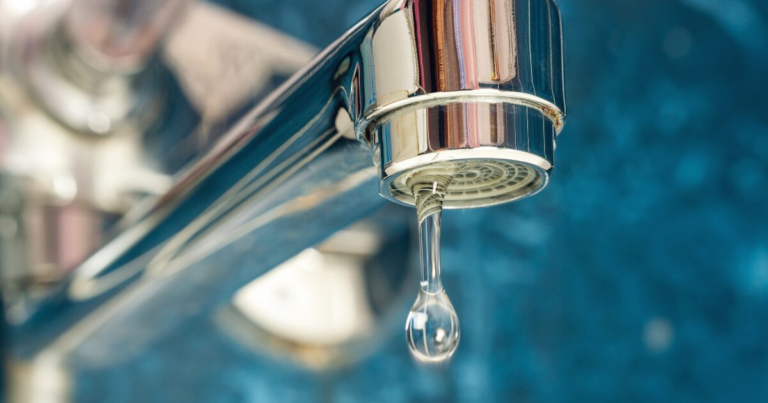We’ve all been there: you buy a store-bought air freshener, spray it around your living room, and it smells lovely… for a few hours. The next morning? Nothing. Worse, that chemical-heavy fragrance can trigger headaches, worsen allergies, or feel too artificial.
That’s why so many people are searching for homemade natural air fresheners that last. They’re safe, cost-effective, eco-friendly, and surprisingly powerful when made with the right ingredients.
In this comprehensive guide, you’ll learn:
- 7 proven DIY recipes that keep your home fresh naturally.
- Science-backed longevity hacks to make scents last weeks, not hours.
- The best essential oils for different moods and spaces.
- Mistakes to Avoid When Making DIY Fresheners.
- Prevention tips to stop bad odors before they start.
- Answers to common questions backed by trusted references.
Whether you want to save money, avoid chemicals, or just make your home smell amazing, this guide is your go-to resource.
(This article may contain affiliate links, meaning if you click through and make a purchase, I may receive a small commission at no additional cost to you. I only recommend products I have vetted for quality and usefulness in line with our mission to provide trustworthy home and lifestyle solutions.)
Why Choose Homemade Natural Air Fresheners?
- Healthier for your family – Many commercial sprays contain VOCs (volatile organic compounds), which can worsen asthma, allergies, and indoor air quality【1】.
- Eco-friendly – Skip single-use plastics, aerosols, and synthetic chemicals. Reusable jars, natural fillers, and biodegradable ingredients are better for the planet.
- Cost-effective – DIY recipes often cost less than $2 per batch, compared to $5–10 store-bought sprays.
- Customizable scents – Want a calming lavender blend for your bedroom or an energizing citrus mix for mornings? You control the scent.
- Longer-lasting results – When made correctly with fixatives, DIY air fresheners can last for weeks instead of hours.
📌 Fact Check: According to the EPA, certain chemicals in conventional air fresheners may react with indoor pollutants to form secondary contaminants, making DIY natural solutions a healthier alternative【1】.

7 Proven DIY Recipes for Homemade Natural Air Fresheners
Here are recipes that cover different scent needs, strengths, and spaces.
1. Baking Soda + Essential Oil Jar
- Best for: Bathrooms, closets, trash bins.
- What you need:
- Small mason jar
- half a cup of baking soda
- 15 to 20 drops of essential oil
- Fabric or paper cover + rubber band
- Steps:
- Add baking soda to the jar.
- Mix in essential oils.
- Cover the mix with fabric, seal with a band.
- Place where odors linger.
- Longevity: Lasts up to 30 days. Refresh weekly with 5–10 oil drops.
- Why it works: Baking soda absorbs odors while slowly releasing fragrance.
2. Gel Air Fresheners DIY
- Best for: Entryways, office desks, bathrooms.
- What you need:
- 1 packet unflavored gelatin
- 1 cup hot water
- 1 tbsp salt (prevents mold)
- 15 to 20 drops of essential oil
- Artificial food coloring (optional)
- Steps:
- Dissolve gelatin in hot water.
- Add salt + oils (and color if desired).
- Pour into small jars, let set overnight.
- Longevity: 2 to 4 weeks.
- Visual idea: Colorful jars on a windowsill.
3. Simmer Pot Scents
- Best for: Whole-home fragrance during gatherings.
- What you need:
- Pot of water
- Citrus slices (lemon/orange)
- Cinnamon sticks
- Cloves or vanilla extract
- Steps:
- Add all ingredients to the pot.
- Simmer on low for hours.
- Refill water as needed.
- Longevity: Lasts while simmering; reusable 2–3 times.
- Why it works: Heat amplifies natural oils in citrus and spices.
4. Vinegar + Citrus Peel Spray
- Best for: Kitchens, fabrics, light surfaces (not stone).
- What you need:
- Citrus peels
- White vinegar
- Spray bottle
- Steps:
- Fill the jar with peels.
- Cover with vinegar, steep 1 week.
- Strain into a spray bottle.
- Longevity: Concentrate lasts weeks.
- Caution: Do not use on granite/marble.
5. Dried Herb Sachets
- Best for: Closets, drawers, luggage.
- What you need:
- Dried lavender, rosemary, or mint
- Small fabric sachets
- Steps:
- Fill sachets with herbs.
- Optionally add 2–3 drops of essential oil.
- Place in the desired area.
- Longevity: 4–8 weeks.
6. DIY Reed Diffuser
- Best for: Bedrooms, living rooms, hallways.
- What you need:
- Glass jar with a narrow opening
- Quarter of a cup carrier oil (almond or safflower)
- 15 to 20 drops of essential oil
- Reeds or bamboo skewers
- Steps:
- Combine oils in a jar.
- Insert reeds.
- Flip weekly for a stronger scent.
- Longevity: 6–10 weeks.
7. Activated Charcoal + Essential Oils
- Best for: Musty closets, basements, cars.
- What you need:
- Activated charcoal
- Small breathable pouch or jar
- Essential oils (optional)
- Steps:
- Place charcoal in the pouch.
- Add 2–3 drops of essential oil.
- Recharge in sunlight monthly.
- Longevity: 6–8 weeks.
- Science-backed: Charcoal is a proven odor absorber.

How to Make Them Last Longer
- Use fixatives (like vodka, salt, or glycerin) to lock in scent molecules.
- Choose glass over plastic – plastic absorbs oils.
- Store properly – keep away from direct sunlight and heat.
- Refresh strategically – instead of remaking, add a few drops every 2–3 weeks.
Best Essential Oils for Long-Lasting Air Fresheners
- Citrus oils – lemon, orange, grapefruit → uplifting, energizing.
- Herbal oils – lavender, rosemary, peppermint → calming, refreshing.
- Woodsy oils – cedarwood, sandalwood → grounding, long-lasting.
- Spice oils – cinnamon, clove → strong scent, cozy vibe.
✅ Recommended Product: Essential Oil Starter Kit (6 Scents for Beginners) — an affordable way to test blends.
Health note: Some essential oils (like eucalyptus, tea tree) may be toxic to pets【3】. Always research before use.
Common Mistakes to Avoid
- Using too much oil can overwhelm or cause headaches.
- Choosing plastic containers weakens fragrance.
- Ignoring airflow – placement near vents/circulation helps spread scent.
- Forgetting to refresh – a few drops can extend life weeks.
Prevention Hacks: Keep Your Home Smelling Fresh Naturally
- Ventilate daily by opening windows.
- Clean drains with baking soda + vinegar.
- Wash soft fabrics (curtains, carpets, pillow covers).
- Use odor absorbers like charcoal bags in musty areas.
- Regularly take out trash and clean bins.
Homemade Natural Air Fresheners — Quick Comparison
| Recipe | Best For | What It Does | Scent Strength | Longevity* | Refresh Needed | Difficulty | Cost / Batch | Pros | Cons / Safety Notes |
| Baking Soda + Essential Oil Jar | Bathrooms, closets, trash bins | Absorbs odors & releases light scent | Low–Medium | Up to 30 days | Cheap, kid-friendly, and deodorizes | Easy | $1–$2 | Entryways, bathrooms, and desks | Subtle scent; keep away from kids/pets |
| DIY Gel Air Freshener | Ultra-cheap, cuts odors, not just masks | Slow scent release from gel | Medium | 2–4 weeks | Replace or remelt monthly | Easy | $2–$4 | Attractive jars, customizable colors | Needs remaking; avoid ingestion |
| Simmer Pot (Stovetop/Slow Cooker) | Whole-home fragrance, gatherings | Moist heat releases citrus/spice oils | High | Hours while simmering | Add water as needed | Easy | $1–$3 | Strong immediate scent, no oils needed | Needs monitoring, not set-and-forget |
| Provides a subtle dry fragrance | Kitchens, fabrics, light surfaces | Neutralizes odors, light citrus scent | Low–Medium | Weeks (concentrate) | Shake & spritz as needed | Easy | <$1 | Provides a subtle dry fragrance | Avoid stone counters; patch-test fabrics |
| Dried Herb Sachets | Closets, drawers, luggage, shoes | Provides subtle dry fragrance | Low | 4–8 weeks | Add EO drops every 2–3 weeks | Easy | $1–$3 | No liquids, safe for fabrics | Mild scent, avoid damp areas |
| DIY Reed Diffuser | Bedrooms, living rooms, hallways | Steady scent via reeds | Medium | 6–10 weeks | Flip reeds weekly, top off monthly | Moderate | $4–$8 | Elegant look, long-lasting | Spill risk, avoid wooden surfaces |
| Activated Charcoal + Essential Oils | Cars, closets, basements | Absorbs odors, optional light scent | Low | 6–8 weeks | Sun-recharge monthly, add EO drops | Easy | $3–$6 | Great deodorizer, reusable | Subtle scent, keep charcoal contained |
(This post contains affiliate links. As an Amazon Associate, I earn from qualifying purchases.)
Notes:
- Longevity varies depending on room size, airflow, humidity, and oil quality.
- Avoid vinegar sprays on natural stone (marble, granite).
- Always research essential oil safety for children and pets before use.
FAQs about How to Make Homemade Natural Air Fresheners That Last:
Yes! When you use fixatives and proper containers, many recipes last 2–8 weeks【4】.
Typically, every 2–4 weeks, depending on the method.
Not always. Oils like tea tree, clove, and eucalyptus can be harmful to cats and dogs【3】. Stick with lavender or chamomile around pets.
Yes — dried herbs, citrus peels, and spices like cinnamon are natural alternatives.
You May Also Like,
Creating a Productive Morning Routine That Sticks: Practical Strategies
How to Speed Up an Old Laptop Without Upgrading Hardware: Tech Hack
Conclusion
Making homemade natural air fresheners that last is easier than you think — and it’s one of the most rewarding DIY hacks for a healthier, fresher home. With just a few household ingredients, you can save money, avoid toxic chemicals, and enjoy scents that truly last.
Looking for More Smart Solutions?
Find cleaning tricks, DIY fixes, and lifestyle hacks all in one place on our homepage
References
- Environmental Protection Agency (EPA) – Indoor Air Quality & VOCs.
- Environmental Working Group (EWG) – Guide to Healthy Cleaning.
- Mayo Clinic – Essential Oils: Benefits and Risks.
- National Center for Biotechnology Information (NCBI) – Antimicrobial Activity of Essential Oils.
👉 Want more interesting hacks? See our Lifestyle Hacks page.








